Coasters for souvenir plates: what are there, how to choose and make?
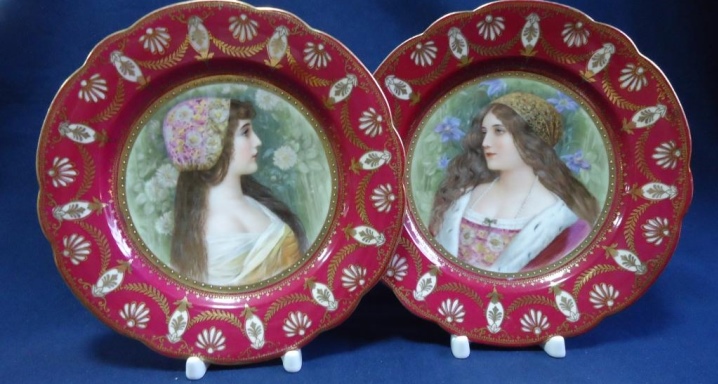
A decorative plate holder is a device that allows you to hold it in a semi-vertical position. A plate mounted on such a stand is a design addition and is used as an interior decoration.
Depending on the size of the plates, the material from which they are made, and the design, the appropriate stands are selected. They can differ in shape, size, material and appearance.
Most decorative plates (factory made) come with stands. In this case, both elements are made according to the same standards.
If the cymbal has been handcrafted, it may be necessary to select an appropriate plate. Knowing what kind of coasters there are, you can choose the right one or make it yourself, using the materials at hand and available tools.


Peculiarities
A decorative plate holder must meet the standards, be practical, reliable and have a suitable design.
Ergonomic design makes it possible to use the stand in the most efficient way. Such a holder will be lightweight and compact, which will protect the surface on which it is installed from mechanical damage, as well as save free interior space.
The design of the stand should correspond not only to the parameters of visual perception, but also provide for the presence of characteristics that ensure the reliability of holding the souvenir plate.


Its structure must be equipped with stiffeners and a sufficient number of support points. These design characteristics can organically fit into the overall design of the stand and fulfill their function without violating the style of the product.
Some models of holders are a combination of a number of individual parts that are connected to each other by means of special grooves and protrusions.
Other modifications can have articulated joints that allow them to be folded several times.
Most of the cymbal holders have a similar design and are made according to the same design principle: there is a vertical base, which acts as a stop, and three support branches. This number of supports is minimal, since the stability of the entire structure depends on it.
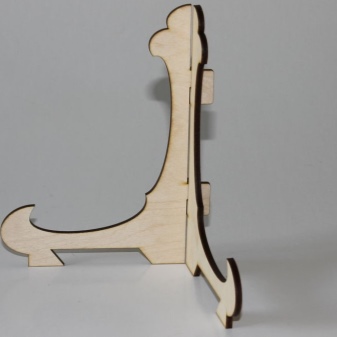

Support elements can act as independent parts, or they can be an integral part of the vertical stop. The central support part can be collapsible. In this case, the side branches are divided into groups attached to its half parts.
When choosing or independently making a stand for a souvenir plate, you should pay attention to their dimensional compliance, stylistic compatibility and the material from which it is made.


Materials (edit)
Metallic
The holders, made of iron, bronze or copper, have individual characteristics that make them stand out against the background of stands made of other materials.
Iron or bronze coasters are often forged items. They are made of solid metal elements, which have been given one shape or another under the influence of temperature and mechanical stress. Sometimes their individual parts are connected to each other by welding or decorative metal twists.
In rare cases, metal holders are made using stamping technology and even less often by laser cutting.
In such cases, the details of the product are flat with cutouts in the appropriate decorative style.



Copper stands are extremely rare specimens. For the most part, they are rare items produced in the past or the century before last.
Their distinctive feature is the susceptibility of copper to oxidation processes. Over time, the surface of such a product fades, becoming dark with greenish tints. This fact gives such stands a special status and attracts the attention of collectors of antique items to them.
Copper holders are ineffective in terms of practicality. They require constant care: cleaning and polishing. Given that the surface of such products is often curved, preventive maintenance is problematic.


Plastic
Stands made of plastic are lightweight and practical. The properties of the material allow you to give them the desired shape without the use of complex manufacturing technologies. They can be voluminous, flat and even transparent. Plastic products are undemanding to service standards.
Making a plastic stand at home is not easy. The complexity is due to the difficulties associated with finding the right material. In everyday life, plastic blanks with satisfactory characteristics are rarely found.
The use of plexiglass is allowed, but its cost is not budgetary.
This material is sold mainly in the form of sheets with fixed dimensional parameters, the values of which significantly exceed the parameters of a blank suitable for making a stand.
Therefore, to make a holder from plexiglass, you will have to overpay.


Wooden
Wood material is most suitable for making a souvenir plate stand. There are modifications of factory-made wooden stands, but making such a product at home does not require significant resources.
The features of this material determine its practicality and low cost. Wooden blanks are easily manipulated by mechanical and manual processing. Thanks to the versatility of the wood properties, the stand can be easily shaped and shaped to the desired shape.
Considering the above characteristics, most people choose stands made from wood. When planning the independent manufacture of this device, the choice also falls on wood materials.


Nuances of choice
Choosing a ready-made holder or choosing a suitable material for its manual production, it is worth considering the following:
- dimensional parameters of the plate: diameter and thickness;
- weight characteristics;
- material of manufacture;
- stylistic design.
The size of the holder and the parameters of its parts will depend on the dimensional parameters of the plate: the "bed" on which the decor is installed, and the supporting elements. Mismatching sizes can lead to problems with the alignment of the holder and the souvenir.


The weight of the plate and the support device play an important role. If the plate is made of a dense material (ceramics, porcelain, etc.), the thickness of its plane exceeds 10-15 mm, and the diameter is more than 150 mm, then the support must be massive and have an appropriate weight. Otherwise, as a result of the weight imbalance, the center of gravity will shift, and the structure will topple over, which will damage its components.
Tray material is a criterion closely related to the rest of the optimal selection parameters. The weight of the product and its stylistic compatibility with other interior elements, including the stand, depend on it.
The color, shape and style of the plate should be consistent with the color, shape and style parameters of the supporting fixture. This will ensure compositional consistency and the best visual experience.


When planning to make a do-it-yourself plate stand, you should pay attention to the selection of a suitable material. The material with the greatest number of practical properties is wood. However, the list of varieties of wood materials contains a list of names that differ in the characteristics of their manufacturing technologies. Here is some of them:
- solid wood massif - boards, beams;
- particle board - chipboard;
- fibreboard - fiberboard;
- plywood.
Depending on the material chosen, the nuances of the process of making a stand with your own hands will differ. However, the general operating principles remain unchanged.



Instruments
Before you start making a homemade stand, you need to prepare a set of basic tools, without which it is impossible to complete this project.
The following items may be marked in the list of the set:
- hacksaw for wood;
- jigsaw equipped with cutting blades without setting the teeth;
- chisel;
- electric drill with drills;
- grinding attachments for a drill;
- measuring devices (tape measure or ruler);
- other related tools.
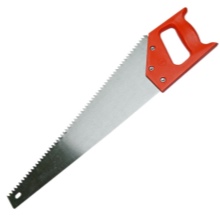


Additional consumables:
- sandpaper of fine and medium grain;
- paint or varnish;
- wood putty (if there are chips or knots in the workpiece);
- adhesives;
- material suitable for the arrangement of anti-slip "soles" (rubber, felt, etc.).


How to do it yourself?
Before starting work, you need to draw up a drawing that can be used as a template. The contour drawing applied to the paper is cut out with scissors and transferred to the workpiece.
The most common stand configuration is one where two or more elements are grooved. This type of holder is best made from plywood or fiberboard (fiberboard).
The workpiece is sawn along the contour line of the drawing transferred to it. For these purposes, an electric jigsaw with thin cutting blades is used. The presence of such blades allows for curved sawing. The narrower the blade, the more curved the cutting line can be.


At this stage, special attention is paid to cutting out the areas that are grooves through which the connection of the constituent elements will be made.
The efficiency of the connection will depend on the accuracy of this procedure.
If the width of the groove exceeds the thickness of the workpiece, then after the two halves are aligned, a backlash will be observed, which is not acceptable.
In the presence of backlash, the stability of the stand decreases, and the likelihood of falling and damage to the cymbal increases.
To avoid this problem, it is necessary to cut the groove area taking into account the thickness of the workpiece. In this case, the groove should be 2-3 mm narrower than its thickness, which will provide a certain amount of groove space.


The presence of this margin will make it possible to compensate for the error that occurs when the saw blade passes through the workpiece, and will make it possible to grind the inner edges of the groove without the likelihood of increasing its width to critical values.
After both halves of the support have been cut out, it is necessary to process the cut line using abrasive materials.
Particular care should be taken when using fiberboard as the main material. The properties of this board imply the formation of fiber pile along the cutting line. Its appearance can reduce the accuracy of the cut, affect the quality of the compatibility of the components and degrade the characteristics of the final product.


Sanding the end face of a fiberboard blank is not an effective solution. The contact of the abrasive material with the fiber of the plate causes its additional lifting. Alternatively, a sharp blade can be used to cut the pile. The optimal method for removing fiberboard pile is to cauterize it with a soldering iron. After burning, the end face of the workpiece acquires a characteristic dark shade, which gives it a special look.
Plywood blank is easy to grind. For processing the end face, you can use special grinding attachments for a drill. Hard-to-reach places are processed manually using sandpaper of the appropriate grain size. Grinding is carried out before the end faces of the workpiece acquire a round or semicircular profile.
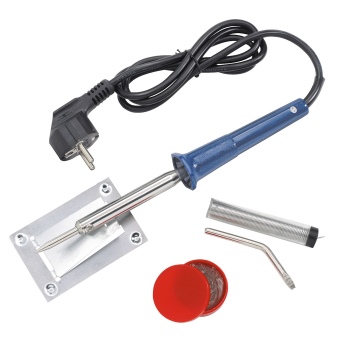

Before processing with paints and varnishes, the workpieces are cleaned of dust and any foreign inclusions. Painting or varnishing is done with a foam sponge, a small roller or balloon.
The coating and its color are selected depending on the stylistic characteristics of the plate that will be installed on this stand. The optimal tool is a transparent glossy varnish, which allows you to keep the natural texture of wood available for external viewing.
The final touch of making a homemade supply for a souvenir plate is the arrangement of anti-slip soles. The points of their gluing should coincide with the points of contact of the stand with the surface on which it is installed.

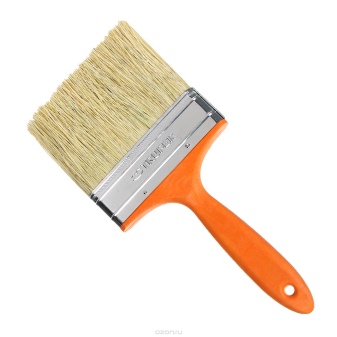
See below for an overview of the cymbal stand.









The comment was sent successfully.